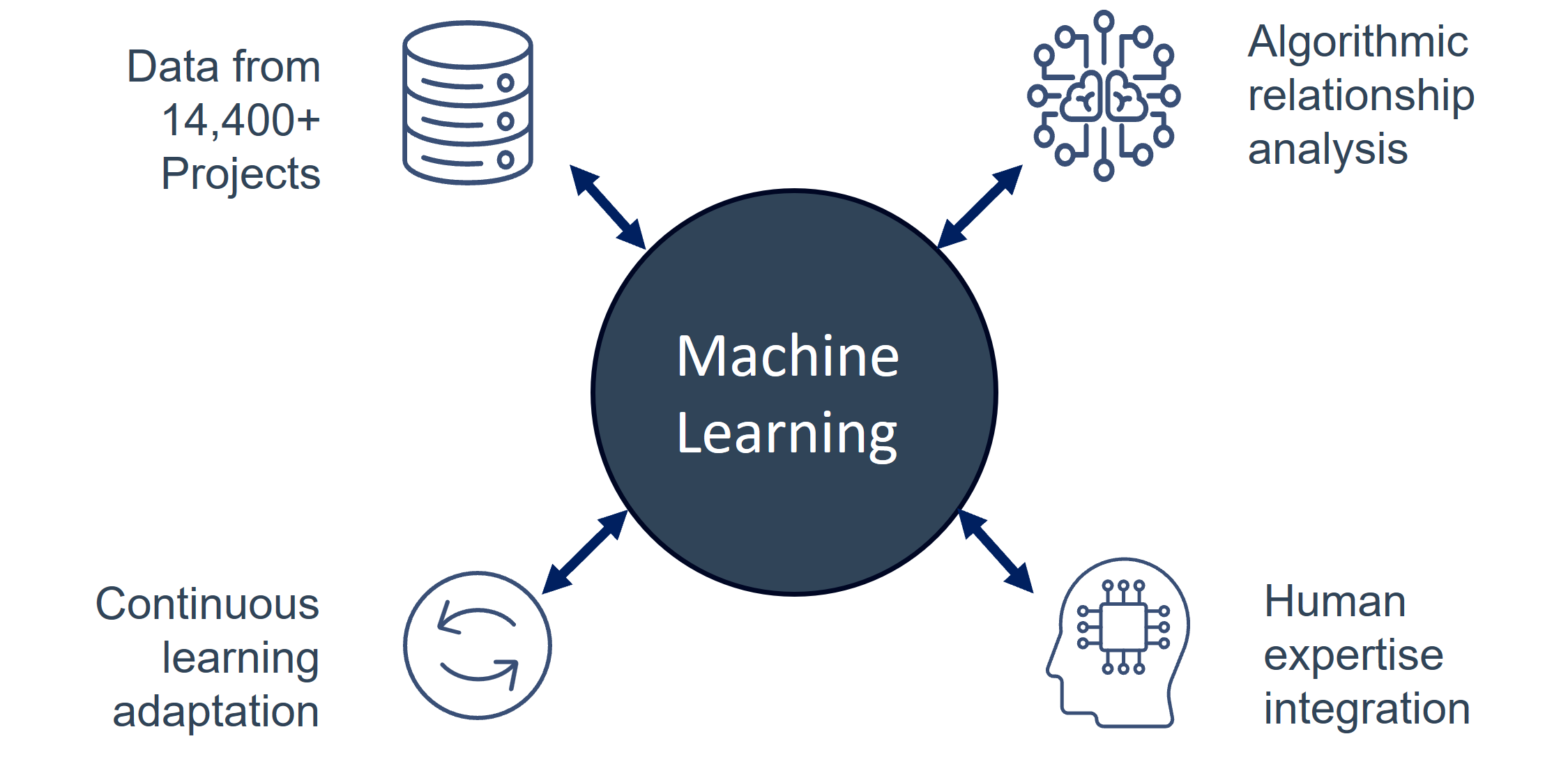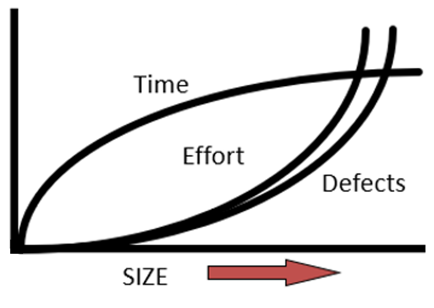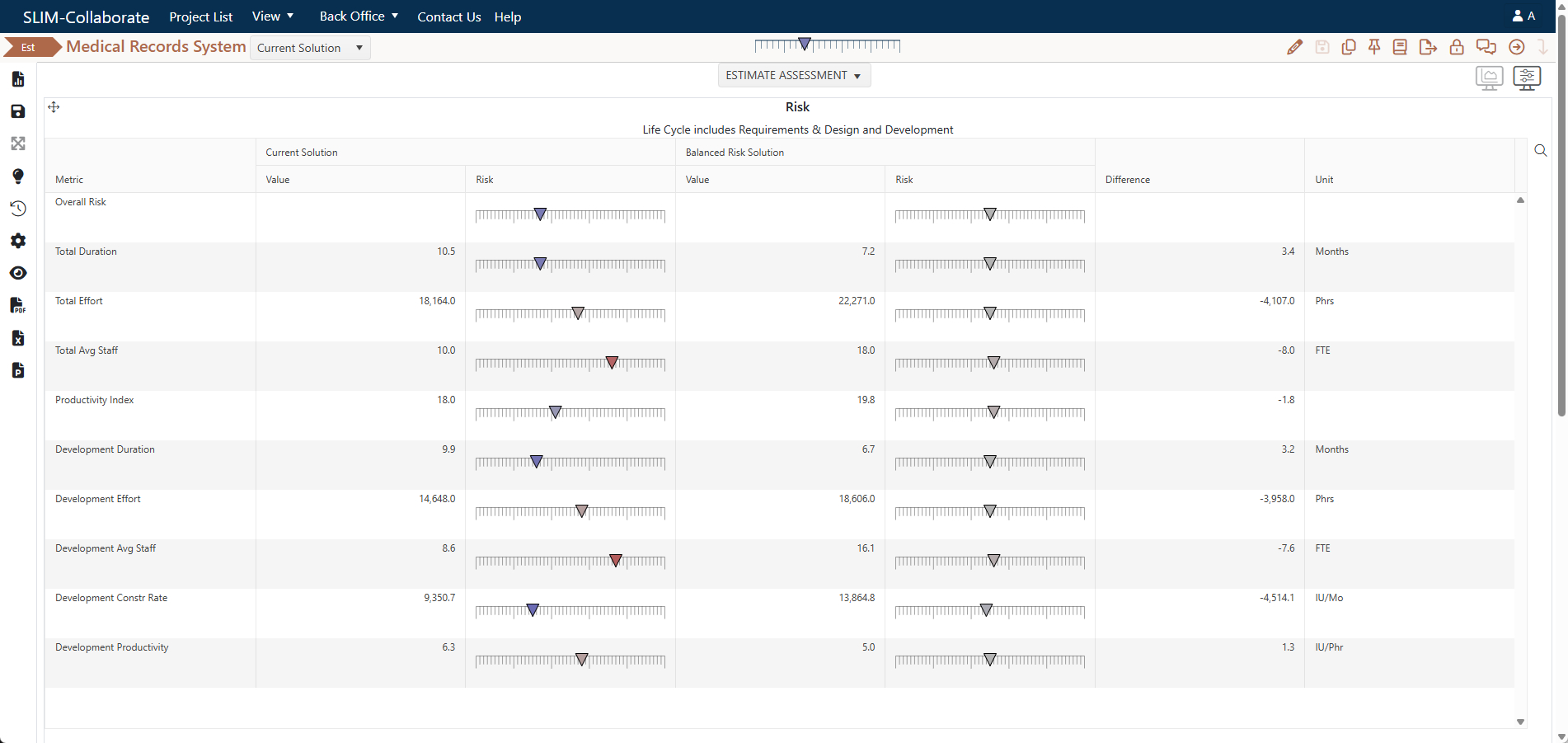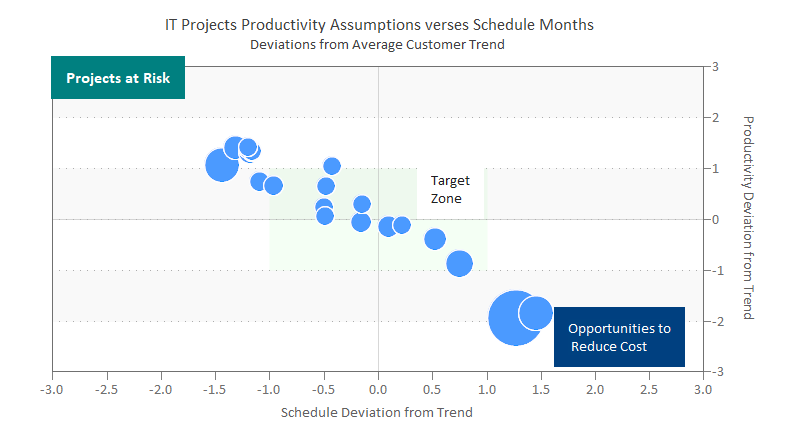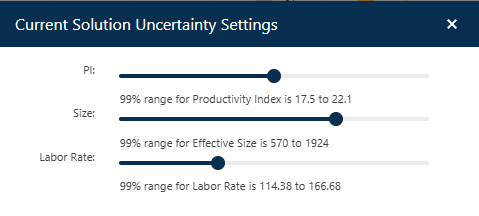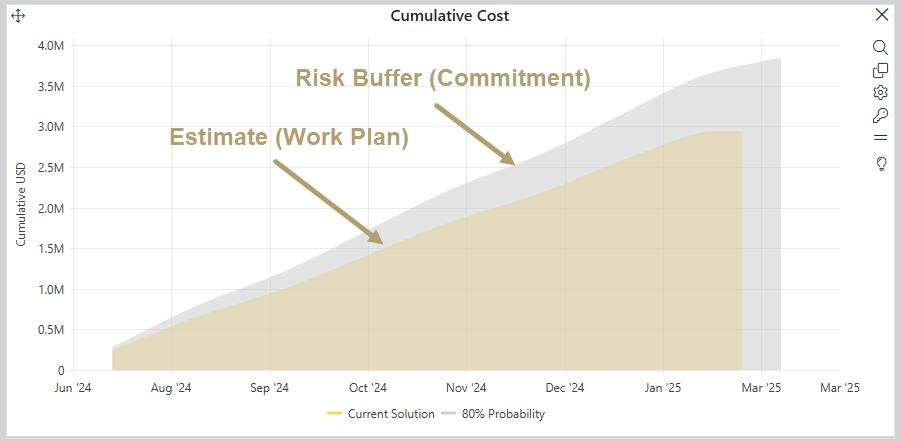Huge reduction in estimation time
Combines simplicity with statistical rigor
When you have limited information about the software project scope, SLIM's T-shirt sizing approach makes estimation intuitive and accessible. Simply use the familiar XS, S, M, L, XL, XXL sizing based on industry trend groups to quickly assess project complexity. This approach leverages statistical ranges from QSM software trends across application types, development methods, and industries, including Engineering, Financial, Government, Agile, and Cloud Migration trend groups. The beauty of this method is that it combines simplicity with statistical rigor – behind the intuitive sizing is sophisticated analysis of similar software projects. This approach reduces initial estimation time from weeks to hours, while maintaining accuracy, allowing you to establish realistic expectations with stakeholders quickly.

